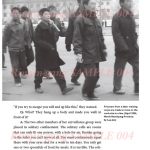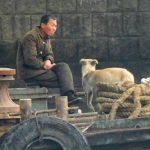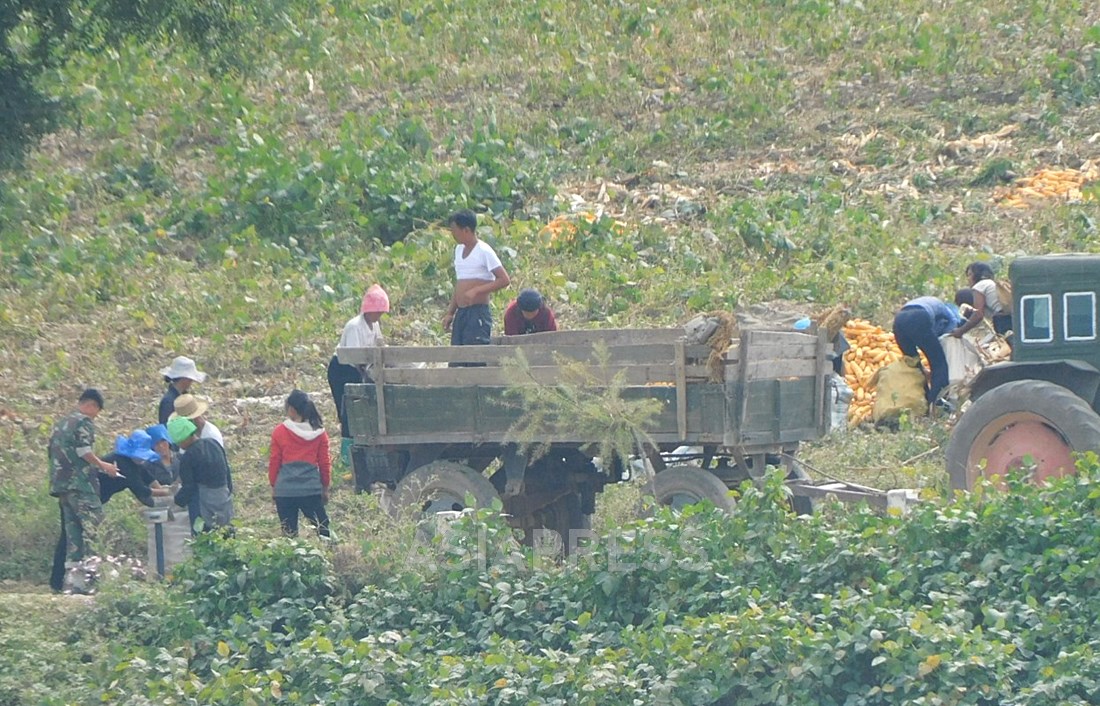
Since mid-September, collective farms throughout North Korea have been at the height of the fall harvest. In late September, ASIAPRESS conducted a survey through a reporting partner of a collective farm in North Hamgyung Province. At the same time, a Chinese reporting partner took photos of a farm in North Pyongan Province near the Yalu River. The second report in this series looks at the “military rice” the farms contribute to the military. (KANG Ji-won / ISHIMARU Jiro)
“A,” a reporting partner in North Hamgyung Province, conducted a survey of Collective Farm “B,” which has around 500 farmers. The farm cultivates corn, North Korea’s mainstay crop. The farm is slightly on the small side compared to other farms in North Hamgyung Province but is typical to the northern region of the country with its many mountains and limited amount of farming space.
The Chinese reporting partner took pictures in late September, taking a ferry along the Yalu River that approached Sakju County, North Pyongan Province. At the time, the farm the reporting partner photographed was in the midst of the corn harvest.
“Military rice” refers to all food consumed by the military, including not only to “white rice” but also “corn” and “mixed grains.”
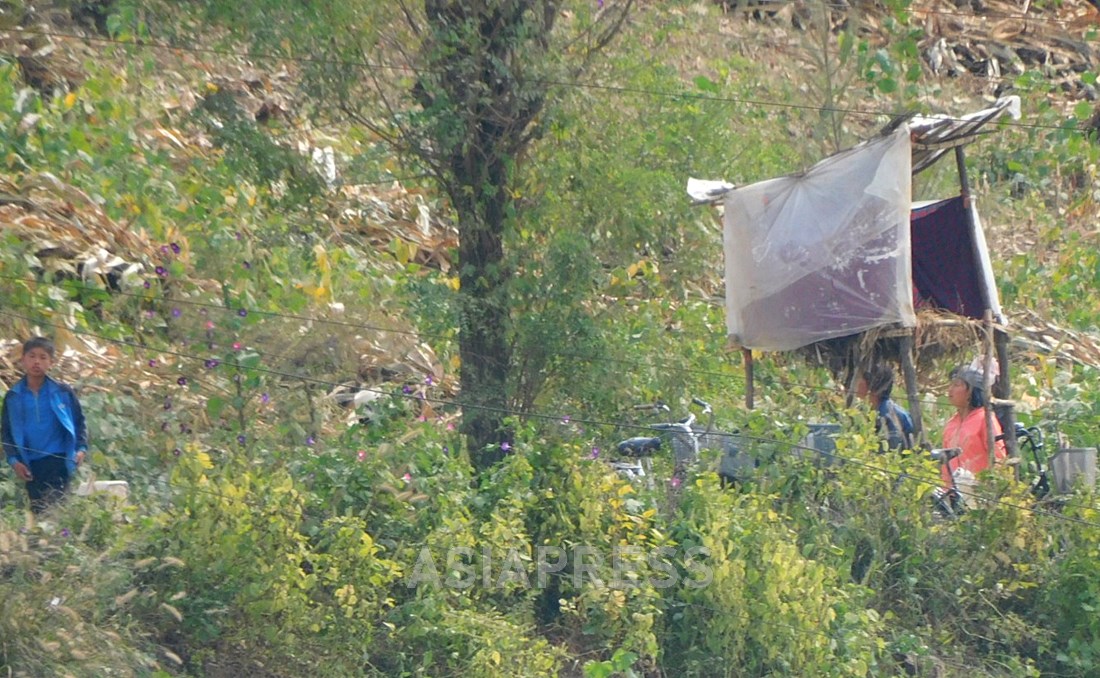
◆ Grains are taken directly from the fields to the military due to large numbers of soldiers suffering from malnutrition
Below is an interview with “A.” The farm he visited, Collective Farm “B,” was at the height of the corn harvest.
―― We’d like to ask you about the harvest of “military rice.”
I’ve heard that military rice was the first to be harvested this year because the military food situation is so bad.
―― So there’s not enough food for soldiers to eat?
The shortages were really bad this past summer. Many young soldiers returned home due to illnesses caused by malnutrition.
―― Did the military take the rice directly from farms?
Unlike in past years, corn yields are being assessed in the fields and the harvest corn is being sent to the military with their seeds still attached. Farmers like this way of doing things because they don’t have to manage or do anything further with the harvested corn in the farm threshing facilities. They say that the new process is aimed at more efficiently managing the crops harvested. Farms have designated in advance which part of their fields are for military consumption. The military confirms how much corn has been harvested in the fields and then takes it away without threshing it.
※ This picture of a different farm in North Pyongan Province taken across the border in China in late September shows a soldier measuring the amount of corn harvested in a field. (Photo 1)
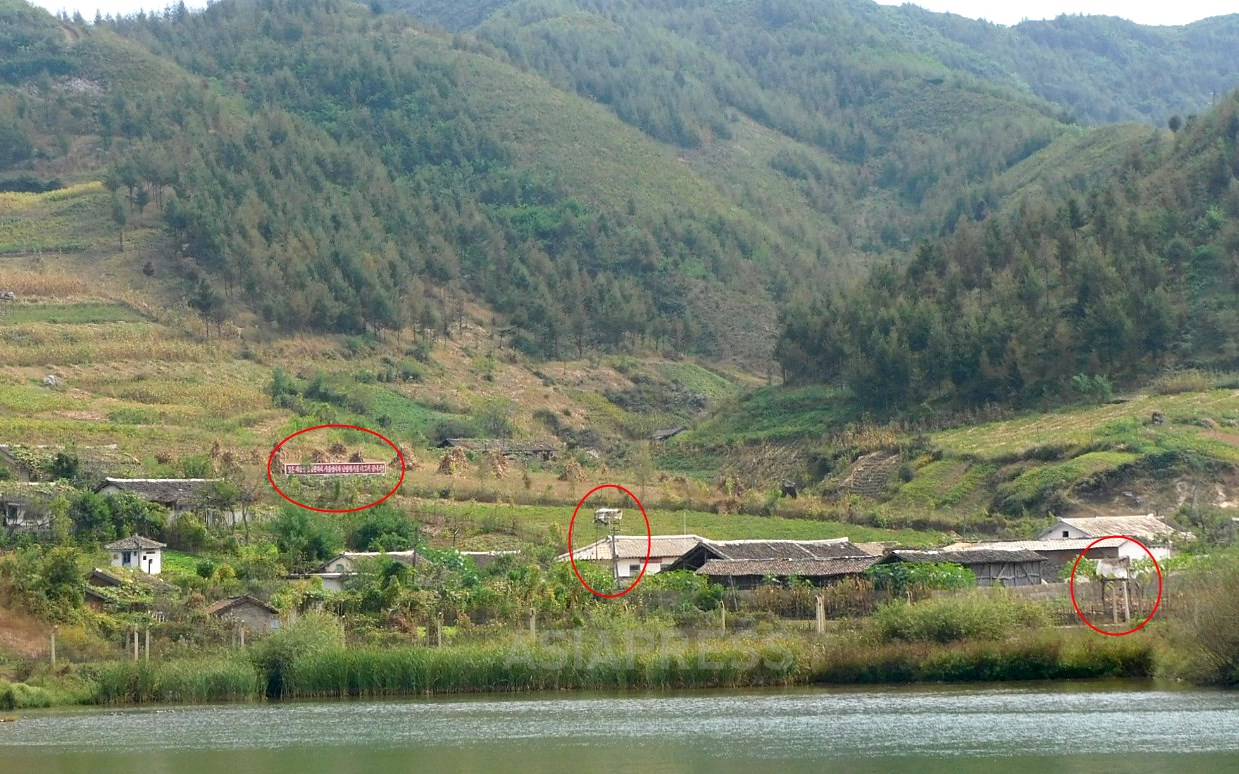
◆ What is happening to the “military rice”?
―― What is the reaction of farmers to this?
There is a lot of discontent among the farmers about the county-level Farming Accounting Committee using the crop yield assessment criteria to measure the amount of moisture in the crops. In the case of the work unit surveyed at Collective Farm “B,” officials calculated the yield of “military rice” at the low figure of 4.1 tons per jongbo (around one hectare), while setting the moisture rate at the high rate of 15%. In reaction to this, the work unit leader protested the high rate while showing the number of kilos of the dried corn that had been harvested. The Farming Accounting Committee agreed with his argument and lowered the moisture rate to 13%.
※ If officials calculate a high rate of moisture in the harvested grains, the crop yield is calculated at a lower rate, which means that farmers get less crops in their distributions.
―― How is the military transporting the rice it receives from the fields?
Normally, military transport vehicles would come to pick it up, but there’s a lack of fuel, so that’s been challenging. Additional amounts of fuel will be provided to transport military rice going forward, so the military is using various vehicles affiliated with agencies and companies to transport the military rice.
―― Where is the corn taken from the fields transported to?
Starting this year, the harvested military rice is first being collected in counties and cities before being transported to brigades and regiments where it then goes through the threshing process. Then it is sent to the battalions. (To 3 >>)
※ ASIAPRESS communicates with its reporting partners through Chinese cell phones smuggled into North Korea.
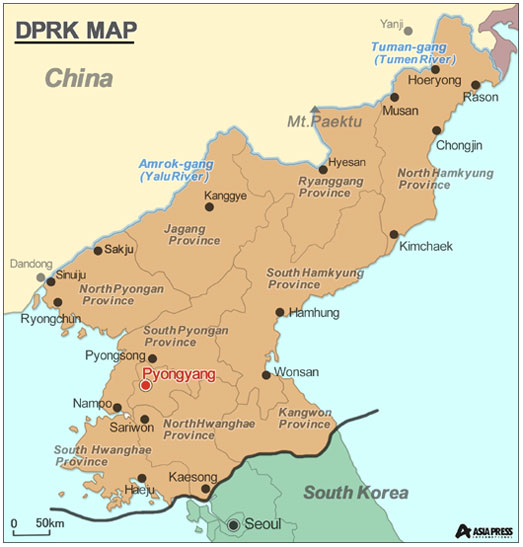
- <Inside N. Korea> A recent report on conditions at farms (7) Many people mobilized to harvest this year’s good yield of potatoes… But, “several tons of potatoes are going rotten in a storage facility each day”
- <Inside N. Korea > A recent report on conditions at farms (6) Major investigation underway after end of harvest to uncover corruption by cadres…Unfair punishment causes uproar on one farm
- <Inside N. Korea> A recent report on conditions at farms (5) Telescopic lens captures conditions in farming communities – 2 The highly-fortified border is akin to a disputed zone…why? (10 photos)
- <Inside N. Korea> A recent report on conditions at farms (4) Telescopic lens shows the present conditions in North Korea’s farming communities -1 Photographs show people mobilized for farming (5 recent photos)
- <Inside N. Korea> A recent report on conditions at farms (3) Thieves from the cities lead to strict monitoring of farming areas…farmers face tough times trying to earn cash (4 recent photos)
- <Inside N. Korea> A recent report on conditions at farms (1) The harvest is better than last year, but lack of materials remains a serious problem (4 recent photos)

